New Haven, CT Pollen and Allergy Report for Summer 2023
Pollen Allergy Trends in New Haven, CT
When is pollen lowest in New Haven, CT?

February
Lowest month total PPM
Avg. PPM
When is pollen highest in New Haven, CT?

April
Highest month total PPM
Avg. PPM
How does pollen in New Haven, CT compare to Connecticut?
New Haven has a lower average PPM than the state of Connecticut.
New Haven yearly avg PPM:
Connecticut yearly avg PPM:
How does pollen in New Haven, CT compare to the USA?
New Haven has a higher average PPM than the USA.
New Haven yearly avg PPM:
USA yearly avg PPM:
Is pollen worse this year in New Haven, CT?
Spring 2023 was worse than spring 2022.
Spring 2023 PPM:
Spring 2022 PPM:
Average PPM in New Haven, CT
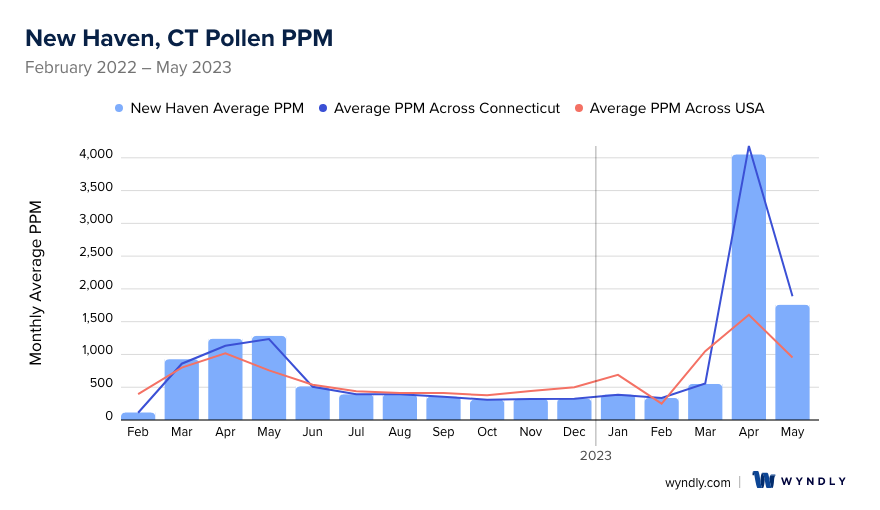
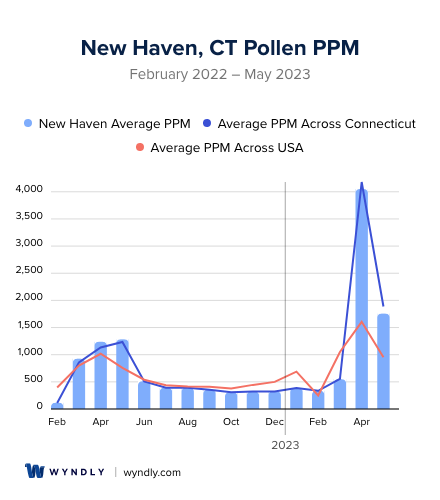
New Haven, CT Pollen and Allergy Breakdown by Month
Grass
When is grass pollen highest in New Haven, CT?
April has the highest grass pollen in New Haven, CT with an average PPM of
When is grass pollen lowest in New Haven, CT?
December has the lowest grass pollen in New Haven, CT with an average PPM of
Tree
When is tree pollen highest in New Haven, CT?
April has the highest tree pollen in New Haven, CT with an average PPM of
When is tree pollen lowest in New Haven, CT?
January has the lowest tree pollen in New Haven, CT with an average PPM of
Weed
When is weed pollen highest in New Haven, CT?
April has the highest weed pollen in New Haven, CT with an average PPM of
When is weed pollen lowest in New Haven, CT?
February has the lowest weed pollen in New Haven, CT with an average PPM of
New Haven, CT Pollen Monthly Breakdown by Pollen Type
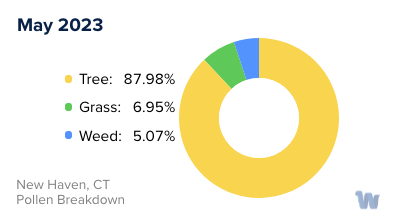
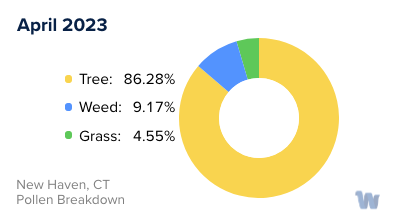
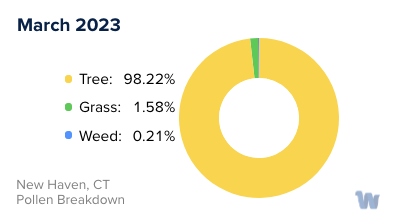
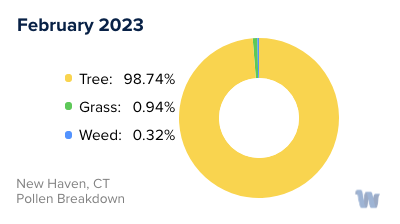
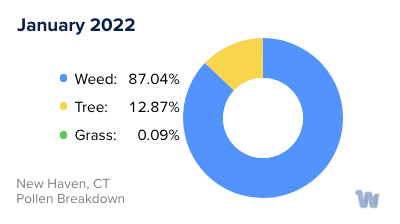
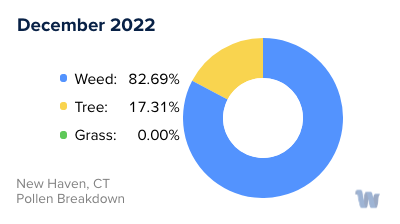
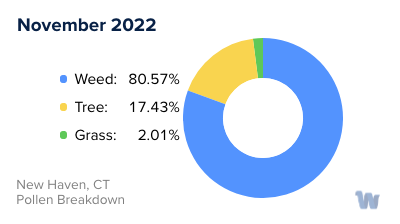
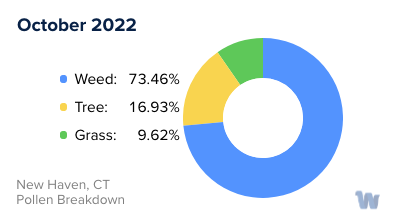
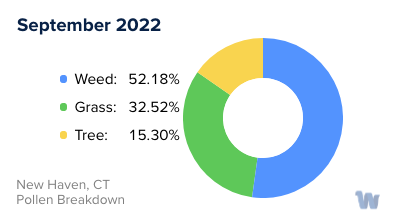
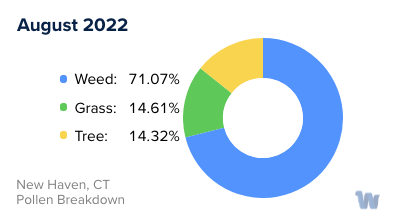
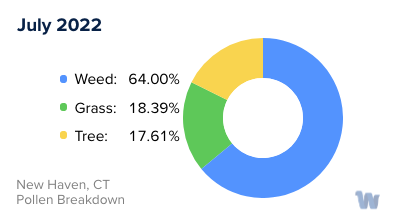
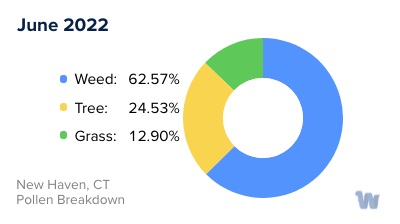
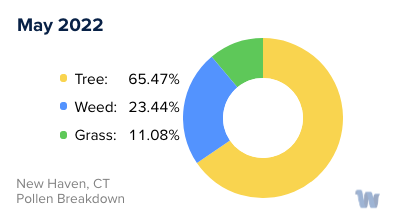
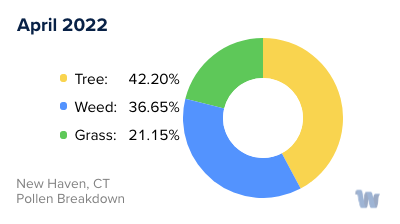
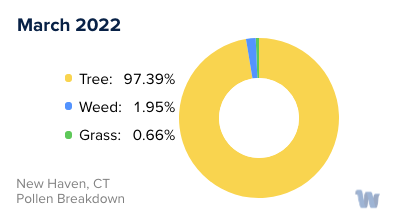
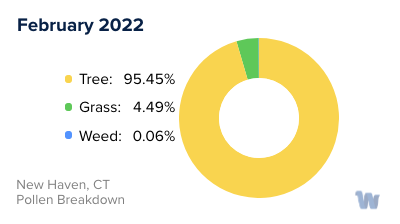
Pollen and Hay Fever in New Haven, CT
When the season shifts in New Haven, Connecticut, the natural beauty of the city blossoms, but so does an unwelcome guest - pollen. Pollen allergies, often referred to as hay fever, come into full swing and many residents find themselves grappling with an array of discomforting symptoms.
Pollen, the microscopic powder released by plants for reproduction, is a common trigger for allergies. In New Haven, a variety of plants contribute to the pollen count, each type having its own unique season.
One of the primary contributors is tree pollen, which typically starts to affect the air quality in early spring. The city is home to a diverse array of trees including Oak, Maple, and Birch, each of which produces a significant amount of pollen. As the weather warms, these trees release their pollen into the air, which can then be carried by the wind across the city.
Following the tree pollen season is grass pollen season, which generally begins in late spring and continues into early summer. The most common grasses in New Haven that contribute to pollen allergies are Timothy Grass, Kentucky Bluegrass, and Ryegrass.
During the late summer and into fall, weed pollen takes center stage. Ragweed is particularly notorious in this season, as it can produce up to a billion grains of pollen per plant. Other weeds contributing to the pollen count include Plantain and Nettle.
It's important to note that the timing and severity of each pollen season can vary from year to year, influenced by factors such as weather patterns and temperature. Even within New Haven, certain areas might have higher pollen counts than others, depending on the local flora and wind directions.
Pollen allergies and hay fever can be challenging to live with, particularly during high pollen seasons. But understanding the sources and timing of pollen in your local area can help you anticipate and manage the situation, even if it's just mentally preparing for the season ahead.

